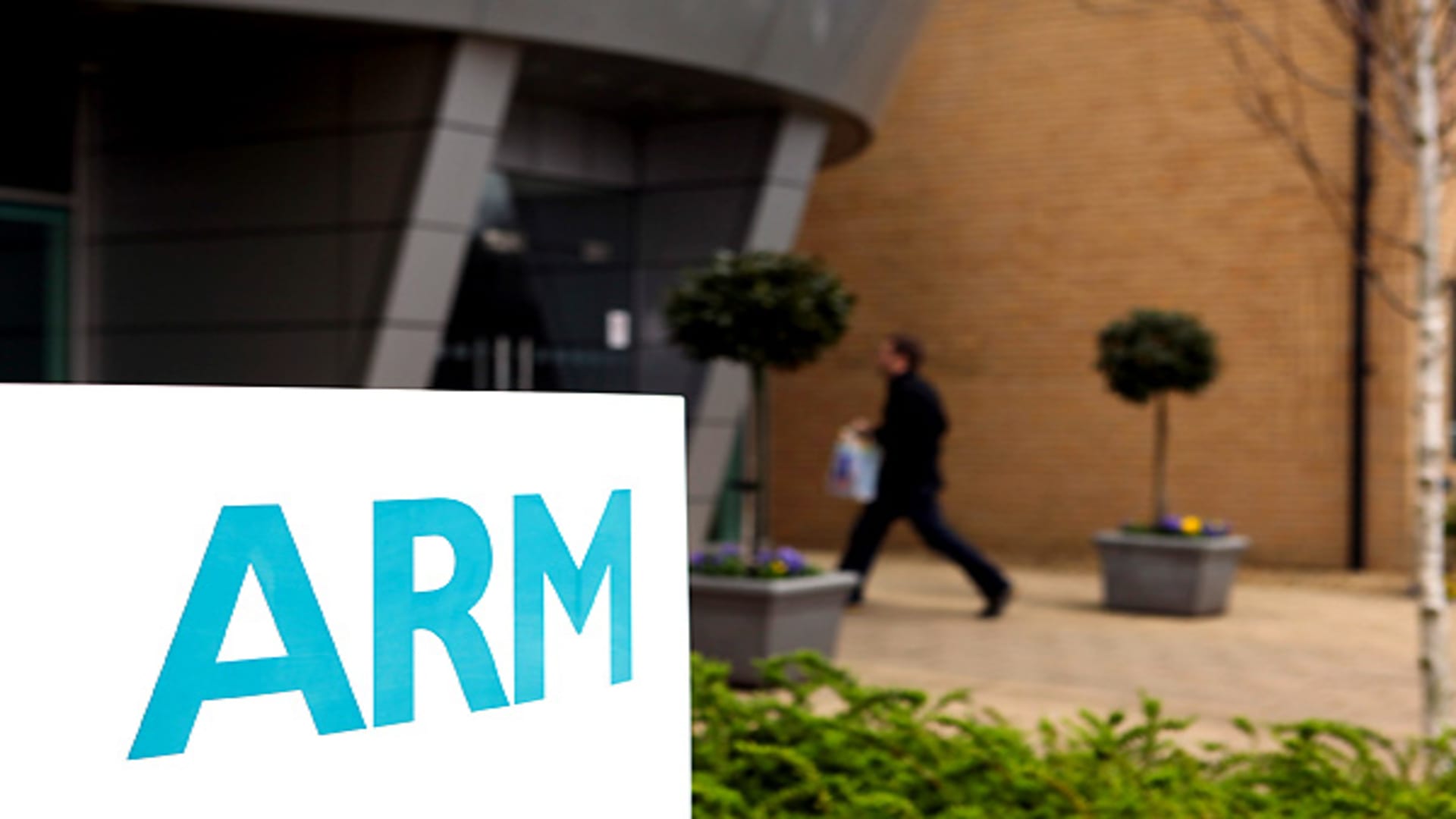IPO and tech enthusiasts are excited about the Arm Holdings Plc initial pubic offering, and with good reason: it’s the first big tech IPO in more than two years.
A lot is riding on its success. In this case, “success” for investors means demand is high and the price rises in the weeks and months after the IPO.
Still, initially the deal will mostly be lacking one natural buyer: Exchange Traded Funds.
Arm will be launching its IPO Thursday on the Nasdaq, selling 95.5 million shares at $51, the high end of the expected price range of $47-$51.
Tech investors increasingly use ETFs to gain exposure to broad tech sectors, and subsectors, like semiconductors.
However, some investors who would like to get immediate exposure to the Arm IPO through ETFs may be disappointed.
ETF indexes have inclusion rules
ETFs are generally a desirable target for corporations to sell stock to because the ownership base skews toward passive and long-term ownership.
However, this particular IPO highlights several difficulties that even large companies like Arm have in acquiring a broader ownership base through ETFs.
For the most part, ETFs are backed by indexes. These indexes have rules that must be carefully adhered to in order to qualify for inclusion.
Unfortunately, partly due to Arm’s own decisions and partly due to the way the major indexes are constructed, ARM initially appears to be ineligible for the largest ETFs.
Problem #1: Arm is not in the S&P 500
The largest index provider is S&P Global. To be included in broad technology ETFs like the SPDR Technology ETF (XLK), which tracks the S&P 500 Technology index, a stock must first be in the S&P 500, which Arm is not.
The first problem is that Arm is not a U.S. company, it’s British — which generally would exclude it from the S&P indexes.
“It is unlikely it would be included in the S&P 500 given its domicile is in the UK,” Matt Bartolini, head of SPDR Americas Research at State Street Global Advisors, told me. “That would exclude it from inclusion out of the gate.”
State Street runs a large suite of ETF products that are tied to S&P indexes, including the largest ETF in the world, the SPDR S&P 500 ETF (SPY).
Howard Silverblatt at S&P Global also noted that S&P requires a stock to have traded for one year and have four consecutive quarters of profitability to be considered for inclusion in the S&P.
Next problem: a free float below 10%
Many tech companies now routinely float very small amounts of stock (10%-15% of the shares outstanding), because restricting supply increases the chance for higher prices.
But Arm appears to be particularly parsimonious, floating roughly 9.3% of the company, according to Renaissance Capital.
That is another problem for many ETFs, which generally require that a company float 10% or more of the shares to be eligible for inclusion.
That’s the case with the S&P indexes, Bartolini tells me, as well as the largest semiconductor ETF, the Van Eck Semiconductor ETF (SMH), which also requires a free float of 10% or more.
Van Eck CEO Jan Van Eck told CNBC on Monday that his firm was still evaluating whether Arm would be eligible for inclusion in his ETF.
Other index firms used by ETFs have float requirements as well. Todd Sohn, who covers ETFs at Strategas, tells me that Vanguard Total U.S. Market (VTI), which uses the CRSP U.S. Total Market Index, also requires a 10% float for fast-track IPOs.
There are ways to get the float above 10%. First, SoftBank could exercise the greenshoe, an optional over-allotment of stock which could add an additional 15% of shares, which would put them just over a 10% float.
When would that happen? “In general, it’s not announced in connection with the pricing, though it can be,” Matt Kennedy from Renaissance Capital told me. “It can also be disclosed a couple days afterward when they announce the closing. Or, at the very latest, a month or so afterward in an 8-K or 10-Q filing.”
Another way is simply to sell additional shares after the six-month lockup period expires.
Potential ETF buyers: Nasdaq-100 ETF, IPO ETFs
There are some potential ETF buyers.
For example, Arm may be eligible to enter the Nasdaq-100, the top 100 non- financial stocks in the Nasdaq, because that index has no float or market capitalization requirements. The Nasdaq-100 is reconstituted every December.
The Invesco Nasdaq-100 ETF (QQQ) which uses the Nasdaq-100 index as its benchmark, is one of the largest ETFs in the U.S.
Other ETFs that specialize in buying IPOs are potential Arm holders, but their buying power is relatively small.
The Renaissance Capital IPO ETF (IPO), a basket of recent IPOs, requires a free float of only 5%, so Arm potentially is eligible for inclusion there.
However, Nate Geraci of the ETF Store cautioned against trying to play IPOs in this manner.
“I’m simply not a fan of investors attempting to play IPOs in the first place,” he told me.
“One of the benefits of being an ETF investor is that you don’t have to worry about company-specific events such as this. Investors should obviously understand what’s going on underneath the hood of any ETF they own, but I would dissuade anyone from buying an ETF simply because it has an allocation to the latest hot IPO.”
